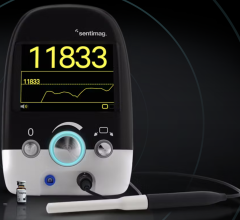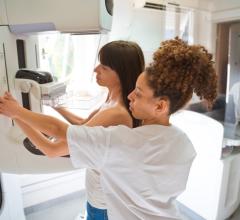
Breast surgeon Michael Cross, M.D., has done clinical research on the DotMed BioZorb surgical marker. (Photo courtesy of DotMed)
Breast cancer research conducted by two Fayetteville, Ark., medical groups highlights their success in pioneering use of an absorbable, three-dimensional marker used during treatment for breast cancer. Their cost analysis showed that by helping to shorten the course of radiation treatments, the surgical marker contributed to a 25 percent cost savings per patient.
Breast surgeon Michael Cross, M.D., of Breast Treatment Associates, and colleagues at Highlands Oncology Group compiled three years of data on use of the BioZorb marker from Focal Therapeutics as part of improvements in treating breast cancer. They concluded that this unique device assisted with the targeting of radiation treatments, which are usually needed after breast cancer surgery.
A Targeted Approach
The surgeon sutures the marker directly to the area that needs radiation. With the marker providing greater confidence in targeting, the doctors said they were able to use shorter courses of radiation — an approach often referred to as hypofractionated therapy.
Hypofractionated radiation treatments typically can be given over three to five weeks, compared to the usual five to seven weeks required for standard radiation therapy.
Recent studies have indicated this shorter course of treatment significantly lowers treatment costs and is just as effective in overall survival rates and preventing cancer recurrence. It also has been shown to lower toxicity and improve patients’ quality of life measures.
Important Trends
The ability to provide radiation with equivalent success in a shorter timeframe is an important and growing trend around the world. However, adoption of these methods has previously been hindered by the difficulty in confidently defining the surgical site needing radiation.
The Fayetteville researchers’ scientific poster, which was presented at the 2015 Breast Cancer Symposium in San Francisco, summarized prospective research and clinical experience with 109 patients over three years.
BioZorb is a small coil, inserted into the breast by the surgeon at the time of tumor removal. It holds six tiny clips arranged in a three-dimensional array. This 3-D array remains over time, while the coil holding the clips dissolves.
The marker helps clinicians visualize where the tumor was removed. It can also be used to help plan and target radiation treatments done after surgery, while marking the cancer site for follow-up mammograms and other imaging studies.
“This device helps us provide shorter courses of radiation, which means less travel and time commitment for patients and is therefore much more convenient for them,” Cross said. “We are also seeing better cosmetic outcomes using this device. Because it provides a structure for the breast tissue during the healing process, it supports regrowth of healthy tissue and helps preserve the natural contour of the breast after surgery.”
Targeted Radiation
Arnold Smith, M.D., a radiation oncologist at Highlands Oncology Group who contributed to the research, said the marker “lets us clearly see where the surgeon removed the tumor, which is the spot with the greatest risk for cancer recurrence. This way, we can focus the radiation where it needs to be. That means more efficient treatment and better care for our patients.”
Scott Jones, M.S., D.A.B.R, the medical physicist at Highlands Oncology, said the device makes it easier during radiation treatment to use more sophisticated “field in field planning.” He said BioZorb also contributes to cost savings from a shorter course of radiation treatment by adding a level of confidence about the accuracy of where the radiation beam in each dose “fraction” should be aimed especially for partial breast or boost treatments.
“When you are delivering radiation with fewer fractions, you need to be sure you know exactly where the dose should be delivered, “ he said. “What BioZorb allows us to do with more confidence is to delineate the breast region more accurately within the field, to contour the dose in three dimensions and deliver each treatment very accurately.”
Cross and his colleagues were the first in the United States to make the surgical marker available to patients. Their research on its use is the most extensive to date.
Editor’s note: More information on this research can be found at www.breasttreatment.com.


 May 28, 2024
May 28, 2024 








